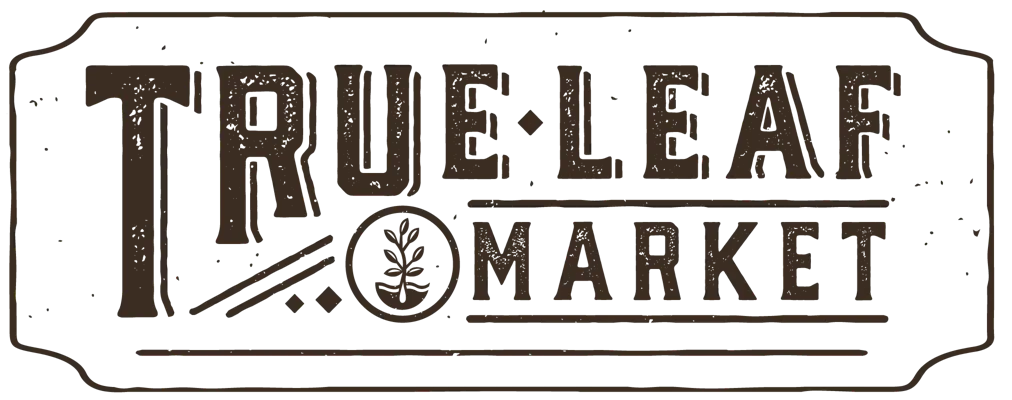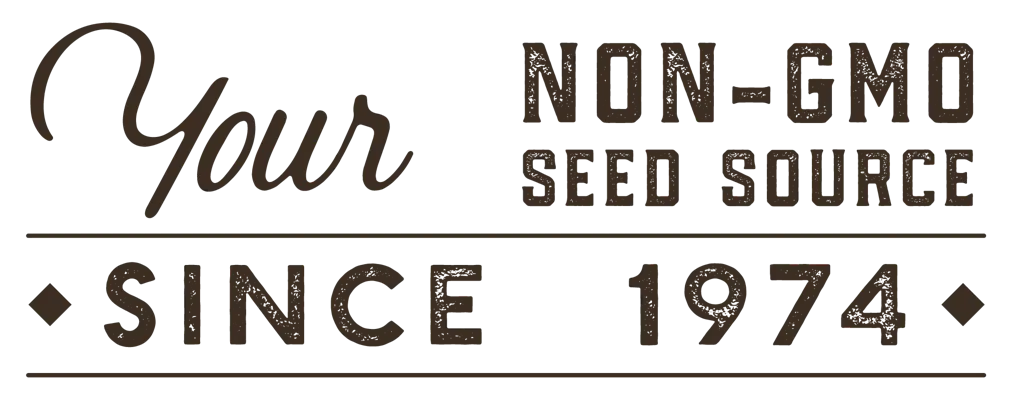Download Free Vegetable Growing Guide PDF
Growing Organic Blue Lake Bush Beans in the Vegetable Garden
Blue Lake Bush Beans are best direct sown into the garden as they don’t transplant well due to their delicate root system. Sow seeds 1 inch deep in well-draining soil after the danger of frost has passed and when soil temperatures reach around 60-85 F. Beans thrive in warm conditions, so wait until the soil has fully warmed up in spring. Space the seeds 4-6 inches apart in rows, ensuring at least 18-24 inches between rows to allow for good air circulation and easy access for harvesting. If you're planting in small spaces or raised beds, you can stagger the plants slightly to maximize space.
Water beans regularly to keep the soil evenly moist but not waterlogged. Water at the base of the plants to avoid wetting the foliage, which can lead to fungal diseases. Beans prefer about 1 inch of water per week. Mulching around the plants with straw or compost helps retain moisture, suppress weeds, and maintain soil temperature. Adding organic compost or a balanced organic fertilizer like fish emulsion or alfalfa meal can provide an extra nutrient boost early in the season. Avoid high-nitrogen fertilizers, as they can lead to excess leafy growth at the expense of bean production.
Harvesting Organic Blue Lake Bush Beans
Blue Lake Bush Beans are snap beans, meaning they are harvested when the pods are tender and the beans inside are immature. You can begin harvesting 55-60 days after planting when the pods are about 5-6 inches long, crisp, and firm. The beans inside should not be fully developed. When possible, pick beans regularly, about every 2-3 days, to encourage the plant to keep producing more beans throughout the growing season. Use your fingers or pruning shears to gently remove the beans from the plant without damaging the stems. Harvesting often will also prevent the pods from becoming tough and stringy.
About Organic Blue Lake Bush Bean Garden Seeds
Blue Lake beans were bred for canning and freezing due to their ability to hold up well during processing.
These beans are primarily used as snap beans, which means they are eaten fresh or cooked while still young and tender. They are great for steaming, sautéing, stir-fries, and adding to salads. They also hold up well for canning and freezing, maintaining their flavor and texture after processing.
Stories From Our Gardeners
"Lightly sauteed fresh green beans with butter, garlic, and salt is one of my favorite side dishes. It goes well with tons of different main dishes and adds nutrients with ease.”
 |
- Lara Wadsworth, True Leaf Market Writer
|
Other Resources
Organic Blue Lake Bush Bean Seeds Per Package:
- 18 g - Approximately 55 Seeds
- 1 lb - Approximately 1,400 Seeds
- 5 lb - Approximately 7,000 Seeds
- 25 lb - Approximately 35,000 Seeds
Non-GMO Organic Blue Lake Bush Bean seeds are available for Fast Free Shipping on qualifying orders.
=======
ATTRIBUTES
Basic Info
| Latin Name: |
Phaseolus vulgaris
|
| Bean Sub-Type: |
Not Applicable. |
| Organic Blue Lake Bush Bean Color: |
Green |
| Organic Blue Lake Bush Bean Flavor: |
Rich and nutty |
Growing Info
| Hardiness Zone: |
3, 4, 5, 6, 7, 8, 9, 10, 11 Annual Crop: Not Intended to Overwinter |
| Days to Maturity: |
50-65 |
| Days to Germination: |
5-10 |
| Seeding Depth: |
1 inch |
| Plant Spacing: |
4-6 inches |
| Row Spacing: |
18-24 inches |
| Plant Height: |
12-24 inches |
| Growth Habit: |
Upright |
| Soil Preference: |
Beans prefer well-draining, nutrient-rich, loamy soil with a pH of 6.0-6.8. As light feeders and nitrogen-fixing legumes, beans do not require nitrogen-heavy fertilizers. |
| Temperature Preference: |
Warmer (70-85 F). |
| Light Preference: |
Full Sun |
Other
| Direct Sow: |
Yes, direct sow when soil temperatures are reliably above 60 F. Planting with an inoculant may increase yields, but is certainly not required for a successful grow. |
| Start Indoors: |
Not Recommended. Beans grow best without any root disturbance. We recommend direct sowing instead of transplanting. |
| Bean Pollination: |
Beans are self-pollinating as they contain both the male and female parts within their flowers, unlike other fruit and vegetable plants. While they are self-pollinating, having a variety of pollinators and flowers around will improve yields by ensuring the greatest chances for pollinating events to occur. |
| Snap or Shell Bean: |
Snap - Snap beans have a fleshy edible pod. Snap beans are also commonly referred to as string beans or green beans (though not all snap beans are green). They are called snap beans because they make a snapping sound when you break them in half. |
| Pole or Bush Bean: |
Bush - Bush beans grow on low-growing, compact, upright, bushy plants that typically do not need a trellis, pole, or other support. Bush beans are usually favorable to container growing. |
| Plant Width: |
12-18 inches |
| Growth Speed: |
Early - Ready for harvest around 45-65 days. |
| Deer Resistant: |
No |
| Germination Temperature: |
70-90 F |
| Pests and Diseases: |
Resistant to Bean Common Mosaic Virus (race 15). Beans are susceptible to beetles, aphids, spider mites, and cutworms. Look for signs of chewing, curling leaves, eggs on the undersides of leaves, and leaf discoloration. Keeping your bean plants clean from dust build-up and surrounded by a variety of plants to help deter and prevent pest damage. Beans are also susceptible to powdery mildew, bean blight, rust, and root rot. Maintain a regular watering schedule that avoids overly saturated soil. The roots need adequate time to air out between watering. This will also help prevent common fungal and bacterial diseases from developing. Good air circulation and applying water to the ground rather than the leaves will help maintain healthy bean plant growth. |
| Garden Size: |
Greenhouse, Garden Plot, Raised Bed, Container |
| Bean Use: |
Fresh, steamed, boiled, sauteed, frozen, salads, dried, etc. |
| Climate Tolerance: |
N/A |





















